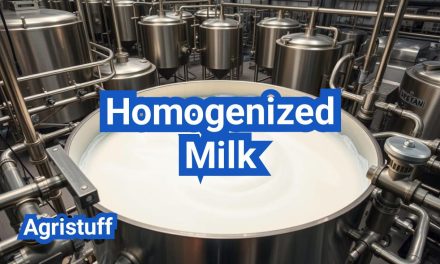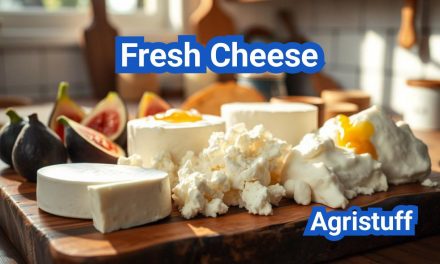Cottage cottage cheese is a versatile and nutritious dairy product that has gained popularity worldwide for its numerous health benefits and culinary uses. Made through a process of curdling milk, it is rich in protein, calcium, and other essential nutrients.
The production of cottage cheese involves pasteurizing milk, adding a bacterial culture, and then separating the curds from the whey. This process contributes to its unique texture and nutritional profile.
Rich in protein and low in calories, cottage cheese is an excellent addition to a healthy diet. It supports muscle growth, aids in weight management, and provides essential nutrients for overall well-being.
Key Takeaways
- Understand the process of making and processing cottage cheese.
- Discover the nutritional benefits of incorporating cottage cheese into your diet.
- Explore various recipes and uses for cottage cheese.
- Learn about the health benefits associated with cottage cheese consumption.
- Get insights into the nutritional content of cottage cheese.
What is Cottage Cheese?
Cottage cheese is more than just a dairy product; it’s a cultural icon in American cuisine. Known for its lumpy texture and mild flavor, cottage cheese has been a dietary staple for generations. But what exactly is cottage cheese, and how did it become such an integral part of American diets?
History and Origin of Cottage Cheese
Cottage cheese has its roots in traditional European dairy practices. The process of making cottage cheese dates back to the early days of cheese production, where it was made from the curds of soured milk. The name “cottage cheese” is believed to have originated from the fact that it was commonly made in homes, or “cottages,” by early European settlers in America.
The production of cottage cheese involves curdling milk, typically with the help of bacterial cultures or rennet, and then draining the whey. The resulting curds are what we know as cottage cheese. This simple yet nutritious food has been a staple in many cultures, providing a rich source of protein and other essential nutrients.
Cottage Cheese in American Culture
In the United States, cottage cheese gained popularity as a health food in the mid-20th century. It became associated with dieting and fitness, partly due to its high protein content and low calorie count. Cottage cheese was often recommended as a diet food, and it became a common feature in many American households.
Cottage cheese has also been a part of various cultural and culinary traditions in America. It’s been used in a variety of dishes, from savory salads to sweet desserts. The versatility of cottage cheese has contributed to its enduring popularity.
| Aspect | Description | Significance |
|---|---|---|
| Origin | Traditional European dairy practices | Rich cultural heritage |
| Production | Curdling milk with bacterial cultures or rennet | Simple, nutritious food production |
| Cultural Impact | Popularized as a health food in the U.S. | Associated with dieting and fitness |
The history and cultural significance of cottage cheese in America are a testament to its versatility and nutritional value. As a food that has adapted to changing dietary trends and preferences, cottage cheese remains a beloved ingredient in many American kitchens.
The Making and Processing of Cottage Cheese
The journey of cottage cheese from milk to curds involves several key steps that vary between traditional and commercial production. Understanding these processes can provide insight into the characteristics of different types of cottage cheese.
Traditional Cottage Cheese Making Process
Traditionally, cottage cheese is made by allowing milk to curdle, then heating it gently to separate the curds from the whey. The curds are cut into small pieces to release more whey, and then rinsed to create a clean, mild flavor.
Commercial Production Methods
Commercial production of cottage cheese involves pasteurization and the use of bacterial cultures or rennet to coagulate the milk. The curds are then cut, cooked, and washed in a controlled environment to achieve consistent quality.
Differences Between Small and Large Curd Cottage Cheese
The size of the curds is a key differentiator in cottage cheese. Small curd cottage cheese has a creamier texture, while large curd cottage cheese has a more rustic feel. The curd size is determined by the cutting process during production.
| Characteristics | Small Curd Cottage Cheese | Large Curd Cottage Cheese |
|---|---|---|
| Curd Size | Small | Large |
| Texture | Creamy | Rustic |
| Production Method | Curds cut into small pieces | Curds cut into larger pieces |
Nutritional Profile of Cottage Cheese
Rich in essential nutrients, cottage cheese is a versatile dairy product that can be a great addition to a balanced diet. Its nutritional profile makes it an excellent choice for those looking to increase their protein intake or simply add more variety to their meals.
Macronutrient Breakdown
Cottage cheese is renowned for its high protein content, making it a favorite among athletes and fitness enthusiasts. A typical serving of cottage cheese (about 1 cup) contains approximately 28 grams of protein, which is crucial for muscle repair and growth. It also contains a moderate amount of fat, which can vary depending on whether you choose full-fat, low-fat, or non-fat versions. The carbohydrate content is relatively low, making it a good option for those monitoring their carb intake.
The macronutrient breakdown of cottage cheese can be summarized as follows:
- Cottage cheese Protein: High-quality protein rich in essential amino acids
- Fat: Varied fat content depending on the type (full-fat, reduced-fat, or non-fat)
- Carbohydrates: Low in carbs, making it suitable for low-carb diets
Vitamins and Minerals in Cottage Cheese
Cottage cheese is not only a good source of protein but also rich in various vitamins and minerals. It is an excellent source of calcium, crucial for bone health, and phosphorus, which plays a key role in many bodily functions including the formation of teeth and bones. Additionally, it contains riboflavin (Vitamin B2) and selenium, contributing to its nutritional value.
Cottage Cheese on MyPlate
The USDA’s MyPlate guidelines recommend including dairy products as part of a balanced diet. Cottage cheese fits well within these recommendations as a dairy product that is high in protein and can be low in fat. It can be incorporated into meals or snacks to help meet daily dairy needs. According to MyPlate, adults should aim for 3 cups of dairy per day, and cottage cheese can be a nutritious part of this quota.
In conclusion, cottage cheese is a nutrient-dense food that offers a range of health benefits due to its rich nutritional profile. Whether you’re looking to boost your protein intake, support bone health, or simply add more variety to your diet, cottage cheese is a versatile and nutritious choice.
Health Benefits of Cottage Cheese
As a nutrient-dense food, cottage cheese provides a range of health benefits that make it a valuable addition to a balanced diet. Its rich nutritional profile supports various bodily functions, from muscle maintenance to bone health.
High-Quality Protein Source
Cottage cheese is an excellent source of protein, containing all the essential amino acids necessary for muscle repair and growth. With approximately 28 grams of protein per cup, it is an ideal food for those looking to increase their protein intake, particularly after workouts or for individuals on a high-protein diet.
Bone Health Support
Cottage cheese is also beneficial for bone health due to its high calcium content. Calcium is crucial for maintaining bone density, reducing the risk of osteoporosis and fractures, especially in older adults. Regular consumption of cottage cheese can contribute to stronger bones.
Blood Sugar Management
The protein in cottage cheese can help in managing blood sugar levels by slowing down the absorption of sugar into the bloodstream. This makes it a beneficial food for individuals with diabetes or those trying to manage their blood sugar levels.
Muscle Building and Recovery
Cottage cheese is popular among athletes and fitness enthusiasts for its role in muscle building and recovery. Consuming cottage cheese after a workout can help in repairing and building muscle tissue due to its high-quality protein content. Additionally, its slow-digesting protein can provide a sustained release of amino acids, supporting muscle recovery over several hours.
Incorporating cottage cheese into your diet can have multiple health benefits, from supporting muscle growth and bone health to aiding in blood sugar management. Its versatility and nutritional value make it a great addition to a healthy eating plan.
Cottage Cheese for Weight Loss
Cottage cheese is gaining popularity as a weight loss food due to its high protein content and low calorie count. This dairy product is not only nutritious but also versatile, making it an excellent addition to a weight loss diet.
How Cottage Cheese Supports Weight Management
Cottage cheese is rich in protein, which is essential for weight management. High protein foods like cottage cheese can help reduce hunger and increase feelings of fullness, making it easier to stick to a calorie-controlled diet. Additionally, protein is crucial for maintaining muscle mass while losing weight, ensuring that the weight lost is primarily fat.
Incorporating Cottage Cheese into a Weight Loss Diet
Incorporating cottage cheese into a weight loss diet can be simple and delicious. It can be consumed on its own as a snack, mixed with fruit for added flavor, or used as a base for various recipes. Combining cottage cheese with fruit like berries or peaches can enhance its taste without significantly increasing calorie intake. Moreover, using it as a substitute for higher-calorie ingredients in recipes can further support weight loss efforts.
Success Stories and Research
Several studies and anecdotal evidence suggest that cottage cheese can be an effective component of a weight loss regimen. Research indicates that high-protein diets can lead to greater weight loss and improved body composition. Many individuals have reported successful weight loss by incorporating cottage cheese into their diets, citing its ability to keep them full and satisfied between meals.
In conclusion, cottage cheese is a valuable food for those seeking to lose weight. Its high protein content, versatility, and nutrient-rich profile make it an ideal component of a weight loss diet. By incorporating cottage cheese into meal plans and using it in various recipes, individuals can potentially enhance their weight loss efforts.
Types of Cottage Cheese
The diverse world of cottage cheese offers numerous options for consumers. With the growing demand for healthier and more versatile dairy products, cottage cheese has evolved significantly.
Cottage cheese is available in various types, catering to different tastes, dietary requirements, and culinary uses. Understanding these types can help consumers make informed choices that suit their needs.

Fat Content Varieties
Cottage cheese comes in different fat content varieties, making it accessible to a wide range of consumers. These include:
- Full-fat cottage cheese: Rich and creamy, ideal for those who are not watching their fat intake.
- Low-fat cottage cheese: A popular choice for those looking to reduce their fat consumption without compromising on protein.
- Non-fat cottage cheese: Suitable for dieters and those with very low-fat dietary requirements.
Specialty Varieties
Beyond the traditional fat content variations, there are specialty cottage cheese types that offer unique benefits. Some of these include:
- Low sodium cottage cheese: Designed for individuals on a low-sodium diet, this variety ensures that consumers can enjoy cottage cheese while managing their salt intake.
- Whipped cottage cheese: Offers a lighter, more aerated texture, making it a great option for those looking for a different consistency.
- Flavored cottage cheese: Infused with various flavors, these types add a twist to the traditional taste, making it more enjoyable for some consumers.
These diverse types of cottage cheese not only cater to different dietary needs but also enhance the product’s versatility in cooking and as a snack.
Cottage Cheese vs. Other Dairy Products
When it comes to dairy products, cottage cheese stands out for its unique texture and nutritional profile. This section will compare cottage cheese with other popular dairy products, highlighting its advantages and differences.
Cottage Cheese vs. Greek Yogurt
Cottage cheese and Greek yogurt are both high-protein dairy products, but they differ in texture and usage. Cottage cheese has a lumpier texture and is often used as a snack or ingredient, while Greek yogurt is smoother and commonly used as a base for sauces or as a topping.
A key difference between the two is their protein content. Cottage cheese generally has more protein than Greek yogurt, making it a popular choice among athletes and bodybuilders. However, Greek yogurt often contains more calcium, which is essential for bone health.
Cottage Cheese vs. Ricotta Cheese
Cottage cheese and ricotta cheese share some similarities, but they are used differently in cooking. Ricotta cheese is often used in Italian dishes like lasagna and cannoli, while cottage cheese is more versatile and can be used in both sweet and savory dishes.
One of the main differences between cottage cheese and ricotta cheese is their taste and texture. Ricotta cheese is generally softer and milder, while cottage cheese has a tangier taste and a lumpier texture.
Cottage Cheese vs. Regular Cheese
Cottage cheese differs significantly from regular cheese in terms of its production process and nutritional content. Regular cheese is often higher in calories and fat, while cottage cheese is lower in fat and calories.
| Dairy Product | Protein Content (g) | Calories | Fat Content (g) |
|---|---|---|---|
| Cottage Cheese | 28 | 110 | 2 |
| Greek Yogurt | 20 | 100 | 0 |
| Ricotta Cheese | 11 | 150 | 10 |
| Regular Cheese (Cheddar) | 6 | 115 | 9 |
Cottage Cheese in Special Diets
Cottage cheese is a nutrient-rich food that can be adapted to several special diets, offering a versatile option for individuals with specific dietary needs.
Cottage Cheese on Keto Diet
The keto diet focuses on high-fat, low-carbohydrate intake, and cottage cheese can be a suitable choice due to its high protein and relatively low carbohydrate content. Opt for full-fat cottage cheese to align with keto diet requirements.
- High in protein, supporting muscle mass
- Low in carbs, suitable for keto diet
- Rich in fats when choosing full-fat versions
Cottage Cheese for Vegetarians
Cottage cheese is an excellent source of protein for vegetarians, making it a valuable component of a vegetarian diet. It can be used in various dishes, from salads to main courses.
Benefits for vegetarians include:
- High-quality protein source
- Versatile in cooking and meal prep
- Rich in calcium for bone health
Cottage Cheese for Lactose Intolerant Individuals
While cottage cheese contains lactose, some lactose intolerant individuals may still be able to consume it in small amounts or opt for lactose-free cottage cheese varieties.
Lactose-free options are available for those who are lactose intolerant.
It’s advisable to start with small portions to test tolerance.
Cottage Cheese on Carnivore Diet
The carnivore diet consists entirely of animal products, and cottage cheese fits into this category. It provides a dairy-based source of protein and can be a change of pace from meat.
In conclusion, cottage cheese is a flexible and nutritious food that can be incorporated into various special diets, providing essential nutrients and versatility in meal planning.
Popular Cottage Cheese Brands in the U.S.
The U.S. market offers a diverse range of cottage cheese brands, catering to various consumer preferences. This diversity is reflected in the different types of cottage cheese available, from national brands to regional and specialty options.
National Brands
National brands such as Daisy and Friendship are well-known for their high-quality cottage cheese products. These brands have a wide distribution network, making their products easily accessible across the U.S.
Regional and Specialty Brands
Regional brands like Good Culture offer unique flavors and textures that cater to local tastes. Specialty brands often focus on specific dietary needs, such as low-sodium or high-protein cottage cheese.
Organic and Artisanal Options
For consumers looking for organic or artisanal cottage cheese, brands like Organic Valley and local dairy farms provide high-quality, sustainably produced options. These products often appeal to consumers willing to pay a premium for organic or locally sourced dairy products.

The variety of cottage cheese brands in the U.S. ensures that consumers have numerous choices to suit their dietary preferences and needs. Whether you’re looking for a national brand, a regional specialty, or an organic option, there’s a cottage cheese brand available to meet your requirements.
Delicious Ways to Enjoy Cottage Cheese
From breakfast to dinner, cottage cheese can be incorporated into your diet in multiple delicious ways. Its versatility makes it a great addition to various meals and snacks.
Sweet Cottage Cheese Combinations
Cottage cheese is a great base for sweet treats. Try mixing it with fresh fruit like berries or sliced peaches for a quick and healthy snack. You can also add a drizzle of honey or maple syrup for extra sweetness.
- Cottage cheese with pineapple and a sprinkle of cinnamon
- Mixing cottage cheese with vanilla extract and topping it with sliced bananas
Savory Cottage Cheese Recipes
Cottage cheese can also be used in savory dishes, adding protein and texture. It’s great as a dip for vegetables or as a topping for baked potatoes. You can also mix it with herbs and spices to create a tasty spread for crackers or toast.
- Cottage cheese and chive dip for crudités
- Cottage cheese stuffed tomatoes
Cottage Cheese as a Cooking Ingredient
Cottage cheese can be blended into smoothies for a protein boost or used as an ingredient in baking. It’s a great substitute in recipes that call for ricotta or other soft cheeses.
- Using cottage cheese in lasagna or ravioli fillings
- Adding cottage cheese to pancake batter for extra protein
With these ideas, you can enjoy cottage cheese in a variety of dishes, from sweet treats to savory meals, making it a valuable addition to your culinary repertoire.
Buying, Storing, and Making Cottage Cheese at Home
Cottage cheese has become a staple in many diets, but understanding how to buy, store, and make it at home is crucial for maximizing its benefits. Whether you’re looking to incorporate more protein into your diet or simply enjoy the versatility of cottage cheese, this section will guide you through the process.
What to Look for When Buying Cottage Cheese
When purchasing cottage cheese, it’s essential to check the label for factors such as fat content, sodium levels, and curd size. Opting for organic or locally sourced options can also enhance the quality of your cottage cheese.
| Feature | Low-Fat Cottage Cheese | Full-Fat Cottage Cheese |
|---|---|---|
| Fat Content | Less than 2% | 4% or higher |
| Sodium Levels | Varies by brand | Varies by brand |
| Curd Size | Small or large curd | Typically large curd |
Proper Storage and Shelf Life
To maintain the freshness of cottage cheese, store it in the refrigerator at a temperature below 40°F (4°C). It’s best consumed within 3 to 5 days of opening.
Simple Homemade Cottage Cheese Recipe
Making cottage cheese at home is a straightforward process that requires just a few ingredients: milk, vinegar or lemon juice, and salt. Here’s a simple recipe to get you started:
- 1 quart of milk
- 1/4 cup of white vinegar or lemon juice
- 1/2 teaspoon of salt
Tips for Perfect Homemade Cottage Cheese
To achieve the best results, ensure that the milk is heated to the correct temperature and that the curds are properly drained. Experimenting with different types of milk, such as goat’s or sheep’s milk, can also yield unique flavors.
At The End of: Cottage Cheese
Cottage cheese is a nutrient-rich food that offers numerous health benefits, making it an excellent addition to a balanced diet. The benefits of cottage cheese include high-quality protein, support for bone health, and assistance with weight management.
The nutrition of cottage cheese is characterized by its high protein content, rich calcium, and various vitamins and minerals. Incorporating cottage cheese into your diet can be a great way to enhance overall nutrition and support a healthy lifestyle.
In summary, cottage cheese is a versatile and nutritious food that can be enjoyed in various ways, from sweet combinations to savory recipes. Its nutritional profile and potential health benefits make it a valuable component of a healthy diet, providing a cottage cheese summary that highlights its importance in a balanced nutritional plan.
FAQ
What is cottage cheese and how is it made?
Cottage cheese is a type of fresh cheese made from the curds of cow’s milk. It’s produced by adding a bacterial culture and rennet to milk, causing it to curdle and separate into curds and whey.
Is cottage cheese good for weight loss?
Yes, cottage cheese can be beneficial for weight loss due to its high protein content, which helps keep you full and supports muscle mass. It’s also relatively low in calories, especially when choosing low-fat or non-fat versions.
What are the nutritional benefits of cottage cheese?
Cottage cheese is rich in protein, calcium, and various vitamins and minerals like phosphorus, potassium, and selenium. It’s also a good source of probiotics, which can support gut health.
Can I eat cottage cheese if I’m lactose intolerant?
While traditional cottage cheese contains lactose, there are lactose-free versions available. You can also consider making your own cottage cheese at home using lactose-free milk or taking lactase enzyme supplements to help digest lactose.
How do I incorporate cottage cheese into my diet?
Cottage cheese is versatile and can be enjoyed in various ways, such as with fruit, in salads, as a dip, or as an ingredient in recipes like pancakes, lasagna, or smoothies.
What’s the difference between small curd and large curd cottage cheese?
The main difference lies in the size of the curds. Small curd cottage cheese has smaller, more uniform curds, while large curd has larger curds. The texture and taste can vary slightly between the two, with some people preferring one over the other.
Is cottage cheese suitable for a keto diet?
Yes, full-fat cottage cheese can be a good fit for a keto diet due to its high fat content and relatively low carbohydrate count. However, be sure to check the nutrition label to ensure it fits within your daily keto macros.
How should I store cottage cheese?
Cottage cheese should be stored in the refrigerator at a temperature of 40°F (4°C) or below. It’s best consumed within a few days of opening, and always check the expiration date or “use by” date on the packaging.
Can I make cottage cheese at home?
Yes, making cottage cheese at home is relatively simple. You can use milk, a bacterial culture or vinegar, and rennet to create the curds. There are many recipes available online that provide step-by-step instructions.
What are some popular brands of cottage cheese?
Some well-known brands include Friendship Dairies, Good Culture, Nancy’s Organic, and Daisy Brand. You can also find store-brand or generic versions at many grocery stores.
Conclusion of: Cottage Cheese
Cottage cheese overview: why this fresh cheese keeps trending in the U.S.
Cottage cheese is a fresh, spoonable dairy food made from soft curds, prized across the United States for its mild taste, high-quality protein, and versatility from breakfast bowls to savory dips. Unlike aged varieties, cottage cheese is not ripened, so it stays delicate, slightly tangy, and ready to eat right out of the tub—making cottage cheese a convenient way to add protein and essential nutrients to everyday meals. See how cottage cheese fits in MyPlate
What is cottage cheese? (standards and identity)
In U.S. regulation, cottage cheese has a formal standard of identity that defines what the product is and which ingredients are allowed, including how curds are formed and how the finished product may be “creamed.” That means your tub of cottage cheese follows strict rules on milk, cultures, salt, stabilizers, and pasteurization, helping ensure consistent quality and safety from brand to brand. FDA cottage cheese standard (21 CFR 133.128)
How cottage cheese is made (simple step-by-step)
To produce cottage cheese, pasteurized milk is inoculated with cultures (and sometimes a small amount of acid), the curd is gently set and cut, and then the curds are cooked and stirred to expel whey before draining. What makes cottage cheese unique is that curds are washed to reduce lactose and acidity, then chilled and mixed with a pasteurized “creaming mixture” for a creamy finish—this careful process gives cottage cheese its clean flavor and tender bite. Dry curd cottage cheese process (21 CFR 133.129)
Curd washing: the texture secret in cottage cheese
Washing the curds in cottage cheese removes residual lactose and lactic acid, which raises the pH and tempers sharpness, yielding a sweeter, milkier taste and a bouncy, tender texture. That is why cottage cheese often tastes less sour than yogurt and why brands can fine-tune mouthfeel by adjusting wash time, temperature, and curd size in their cottage cheese production lines. University of Guelph: Cottage cheese technology
Creaming mixture and allowed ingredients in cottage cheese
After curd washing, manufacturers blend in a pasteurized creaming mixture—typically cream with salt and approved stabilizers—to give cottage cheese its glossy, spoonable body; the rules specify “safe and suitable” ingredients and require pasteurization of the dressing to protect quality. This final step determines the style (e.g., 1% vs. 4%) and the rich, satisfying finish people expect from cottage cheese. Allowed ingredients for cottage cheese
Styles and grades of cottage cheese on U.S. shelves
You’ll find cottage cheese labeled small-curd or large-curd (based on cut size), dry curd (no dressing), and creamed styles ranging from nonfat to 4% milkfat, with quality expectations for flavor, body, and curd integrity. Commercial specifications also outline uniformity, color, and syneresis limits, helping buyers and consumers trust the consistency of cottage cheese across brands. USDA AMS specification for cottage cheese (PDF)
Cottage cheese nutrition: macros and micronutrients
A 1/2-cup (113 g) serving of cottage cheese typically provides about 12–14 g of complete protein with modest carbohydrates, plus nutrients such as selenium, phosphorus, riboflavin, and vitamin B12; fat and calories vary by style, with 4% cottage cheese delivering extra creaminess and satiety. This nutrient density makes cottage cheese a smart choice when you want more protein per bite. USDA-based cottage cheese nutrition facts
Protein quality: why athletes choose cottage cheese
Casein-rich cottage cheese offers all essential amino acids and digests more slowly than whey, which many people find helpful for staying satisfied between meals or as a pre-bed snack; the slow release supports muscle maintenance during overnight fasting. For an easy win, pair cottage cheese with fruit or whole-grain toast to create a balanced, high-protein mini-meal. NIH: Milk proteins—functional and biological properties
Sodium in cottage cheese and smart label reading
Because cottage cheese is a salted fresh cheese, sodium can run high—often 350–500 mg per 1/2 cup—so compare brands and choose “no-salt-added” or lower-sodium tubs if you are watching blood pressure; you’ll still get the protein that makes cottage cheese appealing. Reading the Nutrition Facts Label helps you balance sodium across the rest of the day. American Heart Association: Sodium basics
Lactose and lactose-free cottage cheese options
Curds are washed during production, so cottage cheese is naturally lower in lactose than milk, yet some people remain sensitive; lactose-free cottage cheese solves this by using lactase to hydrolyze lactose into simpler sugars, keeping taste and protein intact. If you’re lactose-intolerant, a lactose-free cottage cheese can be a comfortable way to enjoy dairy. Example: Lactose-free cottage cheese
Food safety and pasteurization for cottage cheese
In the U.S., both the milk and the creaming mixture used in cottage cheese must be pasteurized under the Grade “A” Pasteurized Milk Ordinance, and processors operate under rigorous sanitation programs. This oversight helps cottage cheese maintain safety and shelf life, especially when cold-chain handling is maintained from plant to home. FDA: Grade “A” PMO
Cottage cheese during pregnancy: what’s safe
For pregnancy and other higher-risk groups, the key is to buy pasteurized cottage cheese from reputable brands and keep it properly refrigerated; soft cheeses made with pasteurized milk are generally considered safe. If in doubt, check the label for the word “pasteurized” to ensure your cottage cheese meets safety expectations. CDC: Dairy, Listeria, and pasteurization
How to store cottage cheese and how long it keeps
Keep cottage cheese refrigerated at 40°F (4°C) or below, reseal tightly, use clean utensils, and aim to consume it within about one week after opening (and roughly two weeks unopened, depending on date and handling). Freezing cottage cheese isn’t recommended because it can become grainy and watery upon thawing. USDA: Storage guidance for dairy
Serving sizes: where cottage cheese fits in U.S. meal planning
For diet planning, 2 cups of cottage cheese count as 1 cup-equivalent in the Dairy Group, reflecting its higher protein and lower calcium per volume compared with aged cheeses; use this conversion to plan balanced snacks and meals. Building bowls with fruit and nuts or pairing cottage cheese with veggies and whole grains can round out your plate. MyPlate: Dairy cup-equivalents
Weight-management perspective on cottage cheese
Thanks to its protein density and relatively low calories (for nonfat and 1% styles), cottage cheese can support weight-management strategies by promoting fullness and preserving lean mass when combined with resistance training; choose a style that fits your macros and sodium goals. Pairing cottage cheese with high-fiber produce is an easy way to increase satiety. Dietary Guidelines for Americans
Everyday ways to use cottage cheese at home
You can blend cottage cheese into smoothies for creaminess, whip it for a spreadable dip, fold it into pancake batter, layer it in lasagna, or spoon it over toast with tomatoes and olive oil; the neutral, dairy-sweet profile makes cottage cheese a flexible base for sweet or savory ideas. This versatility is a big reason cottage cheese has resurfaced as a favorite snack. Dietitian-reviewed ideas with cottage cheese
Cottage cheese vs. Greek yogurt: how to choose
Both cottage cheese and Greek yogurt deliver concentrated protein, but cottage cheese is saltier with curdy texture while Greek yogurt is tangy and smooth; your choice may come down to sodium targets, texture preference, and whether you want live cultures. Rotating between both can keep meals interesting while covering similar nutrition goals. Comparison of cottage cheese and Greek yogurt
Choosing a cottage cheese at the store
Look for cottage cheese with ~13–15 g protein per 1/2 cup and an ingredient list you’re comfortable with (milk/cream, salt, cultures, and approved stabilizers), and compare sodium across brands to match your needs; organic and lactose-free cottage cheese options are increasingly available. If you prefer live cultures, some labels highlight active cultures on the tub. How to use the Nutrition Facts Label
Allergies and intolerances related to cottage cheese
People with milk allergy should avoid cottage cheese because it contains milk proteins that can trigger reactions, while those with lactose intolerance may tolerate some cottage cheese or choose lactose-free versions. When in doubt, consult a clinician before reintroducing cottage cheese or other dairy foods. FARE: Milk allergy essentials
Food safety recap: keeping cottage cheese safe at home
To keep cottage cheese safe, buy it cold, transport it in an insulated bag if shopping on hot days, refrigerate promptly, use clean spoons, and discard any tub that smells off, looks separated beyond normal, or has mold—soft cheeses like cottage cheese shouldn’t be scraped and saved. Smart handling preserves the quality you expect from cottage cheese. FoodSafety.gov: Dairy and eggs
Final thought
Whether you like it rich and creamy or lean and protein-forward, cottage cheese is an easy, delicious building block for U.S. meals and snacks: just choose your style, keep it cold, and pair it with produce and whole grains for balance. With clear standards, pasteurization safeguards, and plenty of creative uses, cottage cheese earns its place as a modern staple. Practical ways to use cottage cheese in MyPlate
Sources & References
- FDA: Cottage Cheese Standard of Identity (21 CFR 133.128)
- FDA: Dry Curd Cottage Cheese (21 CFR 133.129)
- USDA AMS: Cottage Cheese Specification (PDF)
- MyFoodData (USDA-sourced): Cottage Cheese Nutrition
- USDA MyPlate: Dairy Group
- CDC: Dairy, Listeria, and Pasteurization
- USDA: Storing Dairy Products
- Healthline (medically reviewed): Cottage Cheese Guide
- EatingWell: Cottage Cheese vs. Greek Yogurt
- American Heart Association: Sodium & Salt
- NIH/NCBI: Milk Proteins Overview
- University of Guelph: Cottage Cheese Processing
- Lactaid: Lactose-Free Cottage Cheese
- Dietary Guidelines for Americans
- FARE: Milk Allergy










